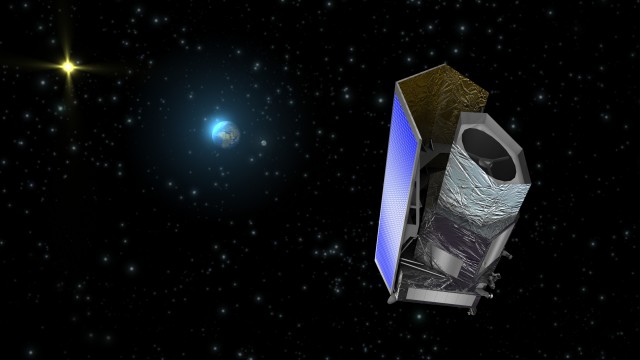NASA to help build telescope that will study Universe's dark past
Ars Technica » Scientific Method 2013-01-27

NASA is joining forces with the European Space Agency to launch a telescope into space with the goal of mapping and measuring around two billion galaxies, the administration announced Thursday. The information the telescope collects will help scientists map dark matter in the Universe and understand how dark energy has affected the Universe’s evolution over time.
The mission, named Euclid, is set to begin in 2020 and last for six years. NASA and the ESA will put the Euclid telescope into orbit at the Earth and Sun's Lagrange point L2. That's the area where the gravitational pull from both bodies balances enough so Euclid can remain stationary behind Earth, as seen from the Sun.
Throughout those six years, Euclid will map galaxies spread across approximately one third of the sky. Based on the relative positions and ages of various galaxies, scientists can determine how the Universe has expanded since its beginning. The apparent acceleration relative to the state of the galaxies will allow them to more precisely understand the effects of dark matter and energy.
Read 1 remaining paragraphs | Comments